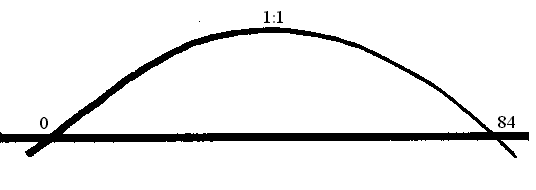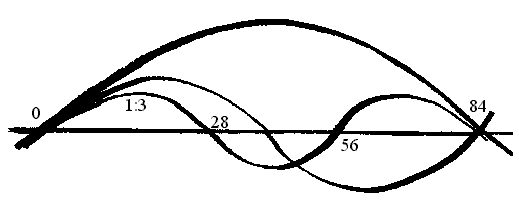| |
In spiritual direction or life-cycle
discernment processes, the ratio 1:3 cycle is helpful in honing in on the nature of a crisis or passage.
If a person is able
to identify the nature of a crisis, this can help clarify the choices being
presented--where the journey
toward wholeness is beckoning them to come. The same is true in working with the labyrinth as a tool
for spiritual growth. In astrological symbolism, the three stages into which
this cycle divides the whole of life coincides with both the moon's and Saturn's returns to
their approximate birth position every 28 years. Moreover, these "returns"
appear more emotionally than mentally or physically relevant. This seems
particularly true of the lunation cycle, while the symbolism of Saturn is
more suggestive of a sense of loss,
even grief, over the passage of time and the fear that life on some level is
passing a person by. Although
these "returns" are approximated at 28, 56 and 84, the actual timing is more or
less 28 to 30; 56 to 59; and 84 to the end of a life. And of course all
cycles archetypally understood are only more or less applicable to
particular lives or times. Crises of independence, identity, meaning,
purpose or limitation can come at any age under unusual circumstances.
Nevertheless, in the natural flow of a life the first half is one in which
it is appropriate to build structures that strengthen the ego, and the
second half a time to tear them down. Because of this Jung considered
analysis and individuation processes best undertaken during the second half
of life. Life cycles, then, are to be understood as approximations, but
nonetheless a place to begin that often does
lead to fruitful insights and that can enable new life-transforming choices.
Still another significance of the triple cycle and Saturn
symbolism, is the demand periodically made to learn from and
resolve the lessons and experiences of life. Here the nature of spiral
progression applies, (and will be expanded on in Praticum II). If, say, the
first stage of a life ends with unresolved issues or unhealed hurts, there is a good
chance that at the same approximate place on the next spiral up similar
limitations, patterns or emotions will again be experienced. Not that the
connection will be obvious, because the circumstances will be different, but
the clue will be in the feelings. One may say, "It feels like I've been here
before." When this happens an understanding of cyclic spiral progression can
become a shortcut to the kind of insight
that heals, transforms and frees one from the pain of life's hurts.
|
|





